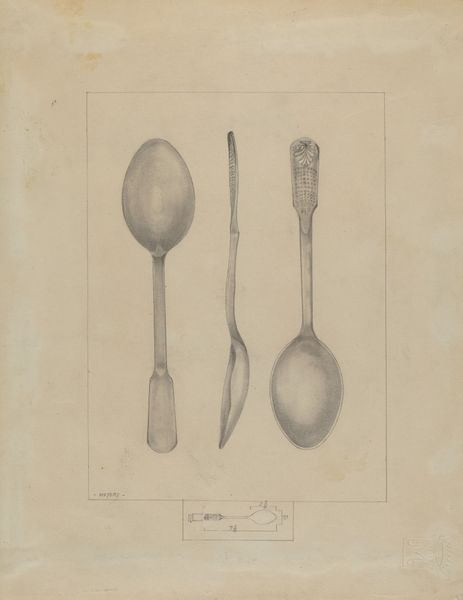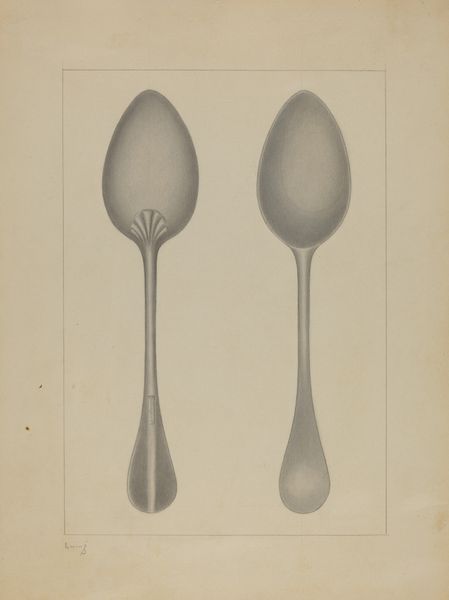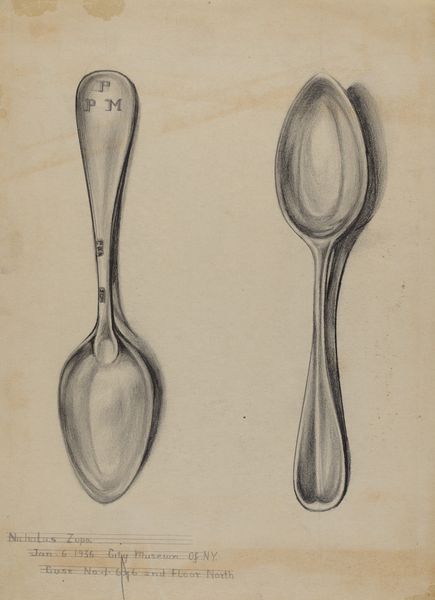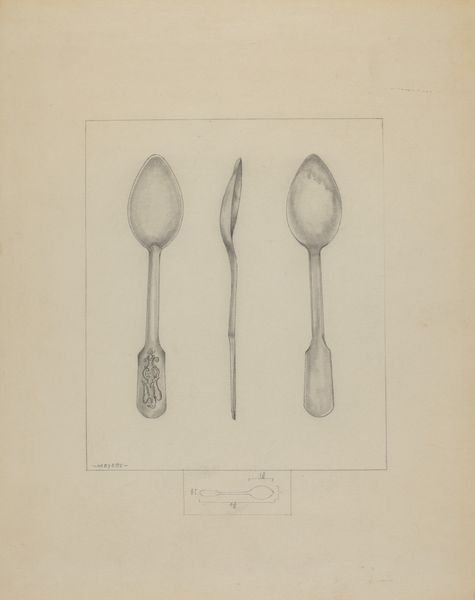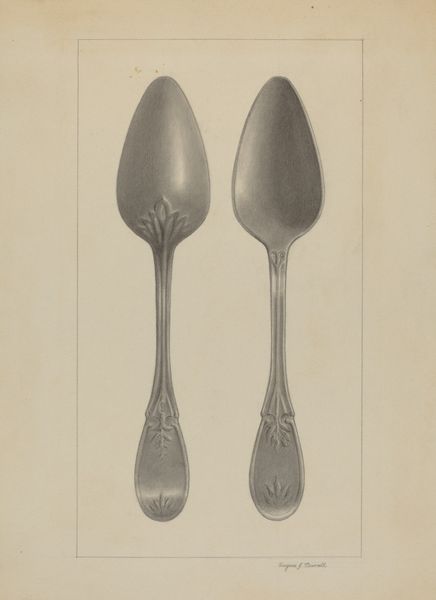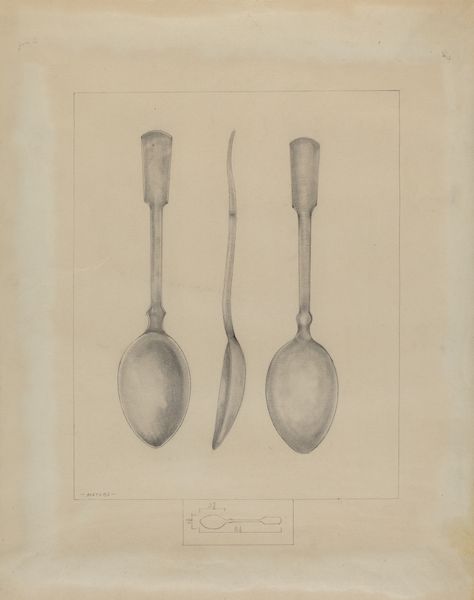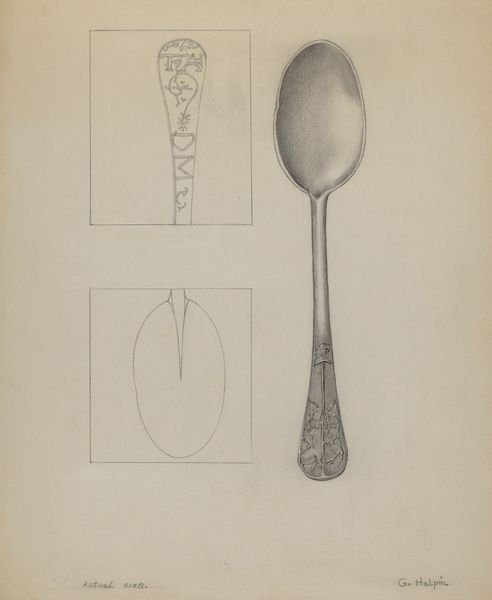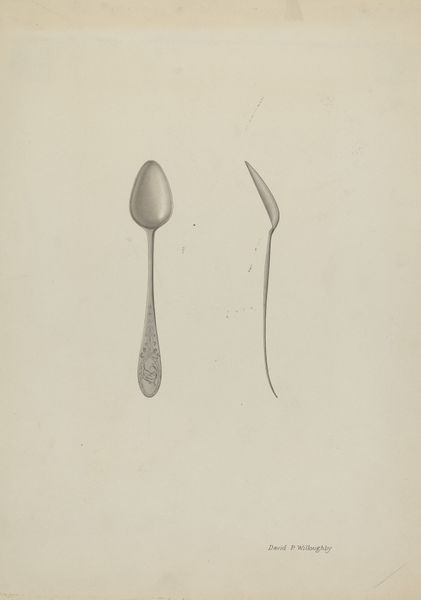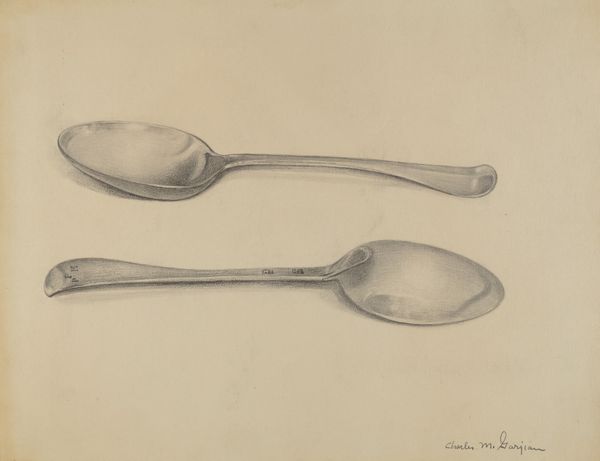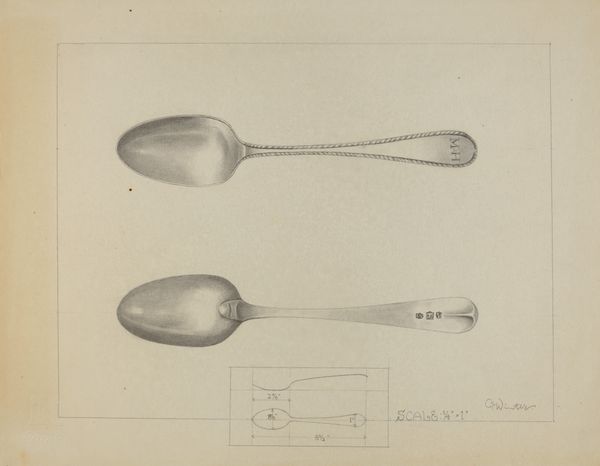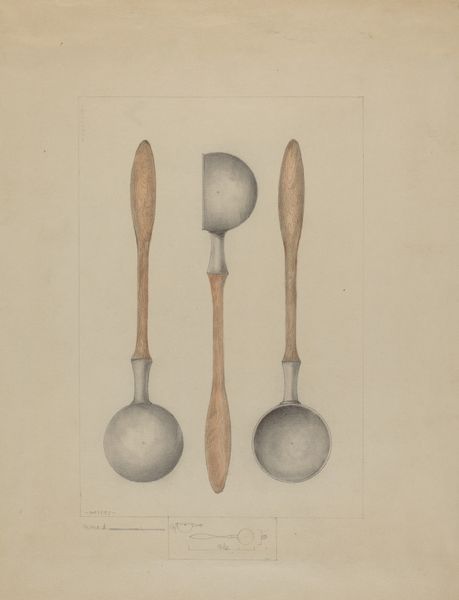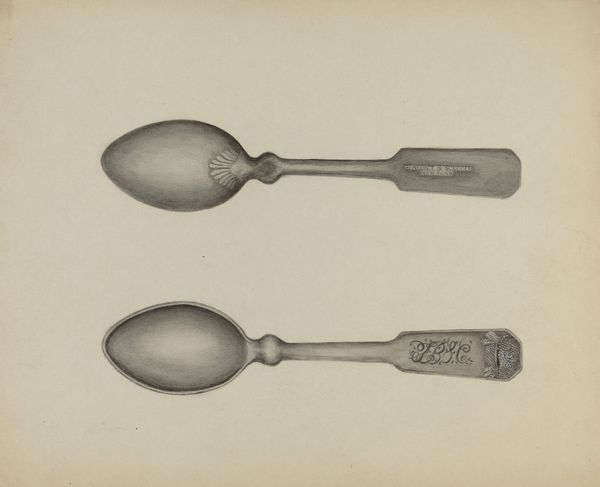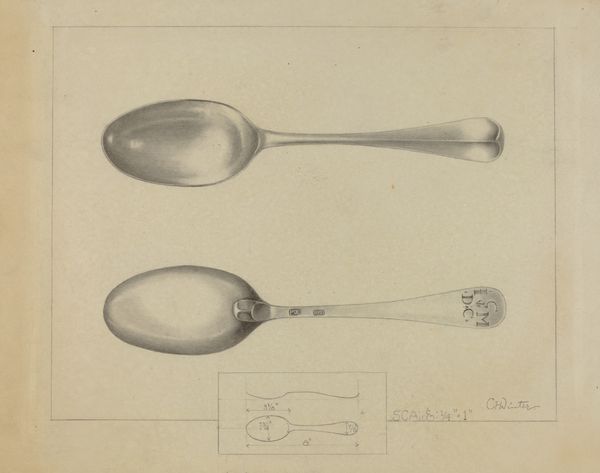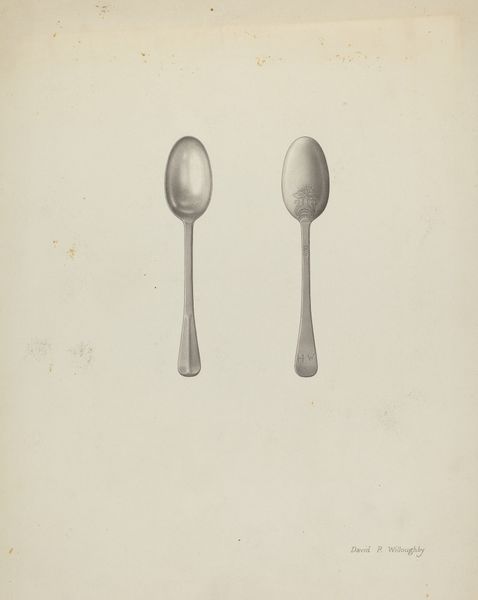
drawing, paper, pencil
#
drawing
#
paper
#
pencil drawing
#
pencil
Dimensions: overall: 27.6 x 21.6 cm (10 7/8 x 8 1/2 in.) Original IAD Object: 6" long
Copyright: National Gallery of Art: CC0 1.0
Editor: So here we have Florence Stevenson's "Silver Fiddle Head Spoon," created sometime between 1935 and 1942. It's a delicate pencil drawing on paper, and the precision is quite remarkable. What draws your eye when you look at it? Curator: It's the representation of these mass-produced items in a hand-drawn format that I find most compelling. Think about it - silver spoons were objects of everyday use, part of the burgeoning consumer culture. This work makes me question what the labour relations and economics were around this seemingly common place object. Editor: That's interesting. I was just admiring the detail, the way the light seems to reflect off the spoon's surface, creating volume. What does Stevenson’s decision to render them so realistically with pencil contribute? Curator: Precisely. She's elevating these functional objects by depicting them through skilled labor, drawing attention to the materiality and craft involved. It also encourages a deeper reading of their role in society and the individual narratives tied to these objects of consumption. Were these spoons the object of intense labor and social stratification for the serving class, or cherished commodities owned by individuals with wealth. Editor: So it's less about the spoon itself, and more about the act of representing it. Almost like Stevenson is using her labor to explore those questions. Curator: Exactly. The very act of Stevenson meticulously recreating these mass-produced items underscores that tension between the handmade and the industrial, between artistic value and the commodity form. It challenges a traditional hierarchy by asking: What is deemed worthy of representation, and by whom? Editor: That's a perspective I hadn't considered. Thanks for sharing. Curator: It’s an important question to ask. Considering the spoons’ materiality encourages reflection on the social context of art.
Comments
No comments
Be the first to comment and join the conversation on the ultimate creative platform.
